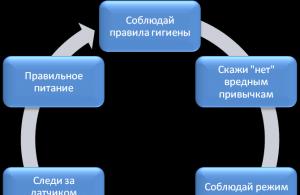The X5 model from the BMW company is a full-fledged SUV with many years of this car originating in 1999, and it is still being produced, which is a reason for the pride of BMW engineers and designers. Bodies, their numbering and features - read about all this in this article.
First generation
In 1999, the first crossover in the history of BMW was presented at the Detroit Auto Show. A new series and a new experience, because before the Bavarians were not engaged in the production of all-wheel drive crossovers. The car received the index X5. The letters indicate the presence of permanent all-wheel drive. The number 5 indicates that the crossover platform belongs to the fifth BMW series. The bodies, of course, were changed to match the off-road class, but the platform and wheelbase remained unchanged.
The E53 body was a breakthrough for the company. It was released in the USA. This model was brought to Europe only in 2000. In 2003, this crossover was updated through a facelift. This event was timed to coincide with the presentation of the junior crossover in the series - X3. The changes affected the front of the car. Under the hood of the car, there are 3 petrol and one diesel unit to choose from. At the end of 2006, the first generation is removed from the BMW assembly line. Bodies for such a long period of production are outdated and needed to be changed.
Second generation
The new version of the crossover has undergone external and technical changes, but has not changed dramatically. The car was produced for 6 years - until 2013. In 2010, the Bavarians carried out a restyling. The front and rear optics, bumpers and fenders were changed.
There have also been changes under the hood. The crossover received new gasoline units and a redesigned diesel engine. The changes also affected the transmission - the gearbox was changed to an 8-speed instead of a 6-speed one. In 2013, the production of the second generation ended.
third generation
The first rumors about the new body of the F15 appeared during the production of the second generation in 2012. As for the new BMW X5 body, the changes again came out not quite revolutionary. Again bumpers, optics and small elements. Although the platform has been changed, the entire engine range is turbocharged. It includes 4 petrol and 2 diesel units. All modifications are equipped exclusively with an 8-speed automatic transmission.
The BMW X5 SUV has been on the world market since 2000. The car has a powerful wheelbase, modern equipment and luxury comfort. In the production of the BMW X5, technological innovations have been introduced to ensure comfort and safety.
The BMW X5 car is made in a modern style: a load-bearing body structure, rear double doors. The interior is equipped with leather and natural wood inserts. The steering wheel is comfortable to adjust, the driver's seat with a high landing provides a wide view, seat settings are provided. The trunk has a volume of 650 liters. The car is equipped with an automatic climate control system with heated seats, an electric sunroof, and airbags.
The BMW X5 has a petrol or diesel engine with a capacity of 184-575 hp and a speed of 230-250 km/h. Acceleration to 100 km / h is achieved in 4-10.5 seconds. Independent suspensions are designed for any road. There are brake discs on all wheels, electronic DBC engine management systems, and DSC directional stability have been introduced.
How profitable to buy a BMW X 5?
A bargain BMW X5 is available through the AutoSpot service. The catalog of the site includes a range of BMWs of various configurations. Key benefits of using AutoSpot:
- Possibility of concessional lending with 5% discounts;
- you can install armored protection BMW Security;
- get branded accessories from BMW;
- use the technical support "Roadside Assistance".
Additional information about the range and prices of BMW can be obtained by contact phone.
Buy BMW X5 from an authorized dealer in Moscow - 4 configurations are available at prices ranging from 4,436,100 to 8,425,100 rubles for a new car. 4 year warranty, great deals, take your pick!
Some puffiness of the features inherent in the predecessor under the E70 index has disappeared without a trace in the new F15. With light touches, designers were able to radically change the appearance of the car. Headlights, fused with branded "nostrils", successfully passed the test on models of the 3rd series and were favorably received by the public. Now they have moved to a large crossover, giving it a pointedly cocky, warlike look. The leaning forward grille and flatter hood added a fair amount of dashing to the car. The taillights with characteristic L-shaped light elements acquired a family resemblance to the optics of the “three” and “five”, and the complex pattern formed by the bends and folds of the tailgate and bumper modernized the rear of the X-Fifth, which looked slightly curvy and angular.
Lines of vyshtampovki rapidly scatter from the aerodynamic "gills" on the front fenders. The clearance was sacrificed for handling, which decreased by 13 mm. And in general, the car became lower by 14 mm, added 32 mm in length, and 5 mm in width.
Interior, seating comfort and capacity
At first glance, the front panel does not seem to have changed much. However, in reality this is not the case at all. First of all, it became lower, displacing the monitor of the multimedia system onto the surface of the dashboard, like in the 3rd series, allowing it to “push apart” its diagonal to 10.2 inches. At the same time, the height of the front part of the panel has decreased, which makes it more elegant - it now seems to be peeking out from under the gently curved cover.
Accordingly, the air ducts of the ventilation system have become thinner - of course, not to the detriment of performance. Instrument panel with separate dials for fuel and coolant temperature gauges - again, as on the 3rd series. The interior is surrounded by LED lighting, the color of which can be changed at will.
On one side of the automatic transmission selector, the keys for controlling the chassis settings and other systems have settled, on the other, the plump washer of the new I-Drive, which has taken over the touch panel. Bavarians, like Stuttgarters, seem to be firmly convinced that poking your finger directly at the monitor screen is not only not aesthetically pleasing, but also unsafe, since the touch screen distracts attention from the road.
More on the little things: the buttons for the electric windows and mirrors have moved from the soft part of the armrests forward to the plastic base. The stowage pockets in the doors have expanded, suggesting the placement of more voluminous items in them - however, as it seemed to us, such an upgrade could be a little confusing for overly full or long-legged riders.
Although the base, like the track, has not undergone any changes with the change of generations, the interior of the car, nevertheless, provides the inhabitants of the front seats with 11 mm more space in the shoulders and 31 mm above the crown. The rear passengers remained practically at their own, and in terms of the air supply above their heads they even turned out to be offended by 6 mm, however, with the solid internal dimensions of the crossover, hardly anyone will notice this. But the trunk has increased in volume by 30 liters, and with the sofa folded - and in general by all 120 liters. In addition, for some 115,124 rubles, a double third row of seats can be installed in a car. So we can safely say: the interior of the X5 has become more spectacular, more comfortable and more functional.
Dynamics and economy
As we have repeatedly noted, the Bavarians are in no hurry to bring all the modifications to the market at once. So far, cars with only three engines can be purchased in Russia: a 4.4-liter petrol and two 3-liter diesel engines. The power of the V-shaped "eight" has grown by no less than 10%, and the torque has increased by almost the same amount. Up to a hundred, a car with this engine accelerates half a second faster, and consumes much less fuel - 1.3 liters on the highway and (hard to believe!) 3.5 liters in the city.
Diesel engines are not so far away from their predecessors, but they can still show something to the discerning buyer. Modification 30d with an additional four "horses" is faster by 0.7 s, and at the same time saves from 1.0 to 1.7 liters, depending on the rhythm of movement. As for the heart of the M50d badged triple-turbo car, it gets to 100 km/h 0.1 seconds faster and consumes 0.6 liters less fuel on the freeway and 1.2 liters less in city traffic.
Without a doubt, in the near future the Bavarians will delight us with cars armed with the famous in-line “six” in the 35i version, as well as the most powerful X5M. As for the 218 horsepower four-cylinder diesel powertrain or the exotic rear-wheel drive S-Drive 25d, already on sale in Germany, we are unlikely to see them.
Budget
Since not the cheapest versions were the first to arrive on the Russian market, it will still be difficult to make a correct comparison of the old and new generations in terms of price and equipment. However, the trend is somehow clear. The old 30d cost 72,000 less than the new one, and was distinguished by its lack of a start-stop system, adaptive cruise control and bluetooth with USB. However, the asset of the "old man" included partial electric adjustment of the front seats - so it's a draw. The petrol 50i was sold at a price of 3,718,000 rubles, but now you will have to pay 3,800,000 for it, that is, 82 thousand more. As for the M50d, the difference between the E70 and F15 generations (from 4,295,000) is exactly 95,000 rubles. Of course, if the car were to suddenly become miraculously cheaper, that would be great; and yet, a rise in price of two and a half percent in this class can be considered insignificant - approximately this amount will cost you, for example, a projection display.
Security
The last time Euro NCAP smashed the X5 was a long time ago in 2003; besides, it was a car of the generation before last. However, there is no doubt that the Bavarian crossover is really safe. Let it be only 6%, but the torsional rigidity of the body still increased. Let's leave the refined handling and excellent driving characteristics of the car behind the scenes and turn to the basic equipment. It includes all the necessary electronic systems, six airbags, Servotronic and run-flat tires. For some money, you can install a night vision system with a dynamic backlight function and a range of up to 300 m, a parking assistant, video cameras in a circle or an automatic high beam control system.
We decided
It is a pity that the price of a car with a change of generations has not remained at the same level, although it would be too presumptuous to expect such a turn of events. In any case, a slight rise in price fully pays off due to a successful elegant design, an even more comfortable stylish interior, as well as engines that have noticeably increased both in dynamics and in efficiency.
The Adventures of the Machine BMW X5 to the world began in America in 1999, when BMW engineers, having radically redesigned the E39 Touring, made a splash in the market, staking out a vacant place in the premium SUV segment. "X-fifth", like many representatives of the class, simply had to turn out to be a clumsy mud-mixer, abusing the use of fuel in the wrong quantities.
By no means! The result was a dynamic, elegant, and at the same time very docile BMW X5, which broke with tradition and gradually became one of the best players in the SAV class (this is how BMW reinterpreted the more familiar SUV abbreviation in its own way).
The BMW X5 car in the back of the E53 stuck its nose into the market. Permanent four-wheel drive and automatic transmission required a dynamic, "evil" engine. There were two of them: both gasoline, with a volume of 3.0 and 4.4 liters, with a capacity of 231 and 286 “horses”, respectively. The first was an in-line six, working in tandem with both mechanics and automatic transmission, the second had a V8 layout and was docked only with automatic transmission. This spark in 2001 was diluted with a three-liter Common Rail diesel engine with a capacity of 184 hp. It was aggregated with a 5-speed automatic transmission. The line did not last long. The modernization of the X-fifth, carried out in 2003, also affected the engines: the turbodiesel, while maintaining a working volume of 3.0 liters, became 218-horsepower, capable of overclocking BMW X5 up to a hundred in 8 seconds. Up to 320 horsepower added gasoline "eight", and the younger engine remained almost the same.

The transmission was also reworked - it became a six-speed one, including the "mechanics". In the sports version (index 4.6 IS), a 4.6 liter engine was available, from which 347 horses were removed.

The transition in 2006 to the new E70 body once again led to the renewal of the engine range. Engines habitually grown muscles. The modern range of engines - two turbodiesels 231 hp. and 286 hp, a three-liter inline-six with 272 horses, as well as a 4.8-liter eight with a capacity of 355 horses. This miniature "nuclear reactor" allows a rather big "X-fifth" to buck from a traffic light to the first hundred in 6.5 seconds!

Crazy power indicators of engines, however, do not allow us to call the Bavarian SUV a "fuel graveyard". Even a 355-horsepower monster has a claimed average fuel consumption of 12.5 liters per hundred. The appetites of the BMW X5 turbodiesels in the combined cycle are more than modest - it is 9 liters of diesel fuel per hundred. These indicators are the achievements of modern technologies, including a variable inlet tract, variable Valvetronic valve lift, and, of course, refined control electronics. A considerable merit in reducing consumption is the use of light alloys in engines and bodies to reduce the gross weight, and incredible aerodynamics for such a “tank” as the BMW X5 is.
We also read about:
| fan 2011-01-25 14:17 | |
The BMW X5, which debuted in 1999, was the brand's first production crossover. The production of cars was carried out at factories in the USA and Mexico.
When creating a car, the experience of the British company Rover, which produced SUVs Land Rover, was used by the Bavarians. The crossover had a permanent all-wheel drive system (62% of the torque was transmitted to the rear wheels) and air suspension on all wheels.
The base BMW X5 was equipped with in-line six-cylinder gasoline and diesel engines, the more powerful version had a V8 4.4 gasoline engine under the hood, developing 286 hp. from. In 2002, a “charged” version of the BMW X5 4.6is entered the market with an eight-cylinder engine with a capacity of 347 forces. Gearboxes - mechanical or automatic.
As a result of restyling in 2003, the crossover received an updated design, an upgraded 4.4 engine and a new 360 hp V8 4.8 engine. from. At the same time, the car had a new xDrive all-wheel drive transmission with a clutch in the front-wheel drive.
The BMW X5 was also officially sold in Russia, its main competitors were, and. At first, only gasoline cars were offered on our market, and in 2004 diesel crossovers appeared at dealers.
The first generation of the BMW X5 model was produced until 2006, a total of 617,029 such cars were made.
| Version | Engine model | engine's type | Volume, cm3 | Power, l. from.Note | |
| 3.0i | M54B30 | R6, petrol | 2979 | 231 | 2000-2006 |
| 4.4i | M62B44TU | V8, petrol | 4398 | 286 | 2000-2003 |
| 4.4i | N62B44 | V8, petrol | 4398 | 320 | 2003-2006 |
| 4.6is | M62B46 | V8, petrol | 4619 | 347 | 2002-2003 |
| 4.6is | N62B48 | V8, petrol | 4799 | 360 | 2004-2006 |
| 3.0d | M57D30 | R6, diesel, turbo | 2926 | 184 | 2001-2003 |
| 3.0d | M57D30T | R6, diesel, turbo | 2993 | 218 | 2003-2006 |
2nd generation (E70), 2006–2013
The second-generation BMW X5 crossover, which was released in 2006, became larger than its predecessor, acquired an optional third row of seats and lost versions with a manual transmission. The car received modern electronic systems: active steering, electronically controlled shock absorbers, adjustable stabilizers, but the air suspension was now only on the rear axle.
The production of crossovers, as before, was carried out at factories in the USA and Mexico, and cars for the Russian market were assembled at the Avtotor plant in Kaliningrad. In 2006, a coupe-shaped crossover created on the same base appeared.
At first, the BMW X5 was equipped with 3.0 (272 hp) and V8 4.8 (355 hp) gasoline engines, as well as three-liter turbodiesels of various capacities. All versions were equipped with a six-speed automatic transmission and had an all-wheel drive transmission with a front axle clutch.
In 2007, a “charged” BMW X5M crossover with a slightly modified design, a sports suspension and a V8 4.4 petrol turbo engine with a capacity of 555 hp was put on the conveyor. from.
After restyling in 2010, the "x-fifth" got an eight-speed "automatic" instead of a six-speed one and new turbo engines - three-liter gasoline and diesel engines, as well as a V8 4.4 with a capacity of 408 forces.
Production of the second generation model continued until 2013, with a total circulation of 728,640 copies.
Table of BMW X5 car engines
| Version | Engine model | engine's type | Volume, cm3 | Power, l. from.Note | |
| 3.0si/xDrive30i | N52B30 | R6, petrol | 2996 | 272 | 2006-2010 |
| xDrive35i | N55B30 | R6, petrol, turbo | 2979 | 306 | 2010-2013 |
| 4.8i/xDrive48i | N62B48 | V8, petrol | 4799 | 355 | 2006-2010 |
| xDrive50i | N63B44 | V8, petrol, turbo | 4395 | 408 | 2010-2013 |
| X5M | S63B44 | V8, petrol, turbo | 4395 | 555 | 2009-2013 |
| 3.0d/xDrive30d | M57D30TU2 | R6, diesel, turbo | 2993 | 235 | 2007-2010 |
| xDrive30d | N57D30OL | R6, diesel, turbo | 2993 | 245 | 2010-2013 |
| 3.0sd/xDrive35d | M57D30TU2 | R6, diesel, turbo | 2993 | 286 | 2007-2010 |
| xDrive40d | N57D30TOP | R6, diesel, turbo | 2993 | 306 | 2010-2013 |
| M50d | N57D30S1 | R6, diesel, turbo | 2993 | 381 | 2012-2013 |
3rd generation (F15), 2013–2018

The third generation of the BMW X5 crossover entered the factory in South Carolina, USA in 2013. A year later, the assembly of cars for the Russian market began in Kaliningrad.
The car was created on the upgraded platform of its predecessor, it retained the same dimensions, air suspension at the rear and an optional third row of seats.
The BMW X5 was equipped only with turbocharged engines: gasoline and diesel in-line three-liter “sixes”, as well as a V8 4.4 gasoline engine with a capacity of 450 hp. from. Also, the crossover received a four-cylinder diesel engine with a volume of two liters, developing 218 or 231 hp. from.
All versions had an eight-speed "automatic", and in some markets a rear-wheel drive option was now offered (only for cars with a two-liter diesel engine).
As before, at the top of the lineup was the BMW X5 M crossover, under the hood of which was a V8 4.4 petrol engine with a capacity of 575 forces. In 2015, the BMW X5 xDrive40e, a 313-horsepower plug-in hybrid with a two-liter petrol engine and an electric motor, entered the market.









